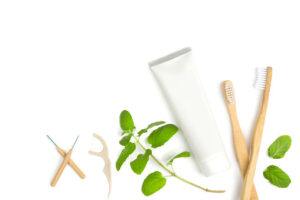Knowing the right time to floss has a great impact on your oral health. It cleanses and dislodges food particles that are stuck between your teeth. With this, the amount of bacteria and plaque in your mouth is reduced. Of course, it isn’t enough to floss; that’s why we compiled this guide on how to floss.
Tooth flossing is specifically designed for individuals who have spaces between two adjoining teeth. Without flossing, there may be an increased risk of entrapment of food particles. Besides, studies also disclosed that flossing in the elderly could prevent many oral diseases such as gingivitis, caries, periodontitis, and more.
However, the American Dental Association states the right time and technique to floss. Before you begin, always ask your dental professional for their recommendation. Afterward, follow their instruction, use fluoride toothpaste with a soft-bristle toothbrush, and replace the brush at least every three months.
So, are you ready to maintain proper oral health? Some people may think they don’t have time to floss, but once you dive into it, you’ll realize that it only takes few minutes. Just in case you’re just hearing the word ‘floss’ for the first time, this is the right platform. All you need is to follow the steps.
In this article, we have compiled a step-by-step guide on how to floss. Aside from that, we will walk you through the proper flossing technique in today’s modern world. While explaining this, you’ll also know the right age bracket to start tooth flossing. Check the remaining content on how to floss properly.

Proper Time to Start Tooth Flossing
In the beginning, tooth flossing is recommended after permanent dentition replaces the milk teeth. For a younger kid, they can floss once they reach the age of 12 years. Meanwhile, it is imperative to seek advice from a dental practitioner to understand the right technique. Below are more explanations!
Actually, there’s no stipulated time to start flossing. Once you’re noticing gum diseases, it’s the right time. Although an individual can also floss anytime because various flossing activity plays a crucial role, but it has to be done regularly. However, practitioners of oral dental health suggest the following as the right time.
1. Flossing Before Brushing
Flossing before brushing lifts and removes plaque. Some people may get into flossing after brushing, but the problem is that plaque and bacteria remains in the mouth. When you floss and then brush, the brushing action removes the particles in your mouth, leaving it free from gum diseases and bacteria.
2. Wanting a Whiter or Brighter Smile
Since flossing is recommended to all age groups, results show that a supportive family plays a crucial role in oral health. So, if you want a whiter or brighter smile, flossing is the right thing. Also, you can include flossing in your daily regimen to experience better oral health. While doing this, ensure it’s twice a day.
Techniques for Flossing
While there are different techniques to flossing, we have come up with the best one among others. According to the American Dental Association, below is a series of sequential steps and techniques to flossing. Practice and check these guides if you’d want to have good oral health in the long run.
- Tear off at least 18 inches of floss material. After that, wrap it up around one of your middle fingers. When you’ve done this, wrap the rest of the floss portion to the opposite hand again. Apply this in your mouth, and you’ll the food particles retained on the floss during the process.
- Tightly hold the floss and avoid rubbing it too much. Besides, if you’re not careful, you can hurt yourself during the process. That’s why we advise you do it gently using a rubbing motion and make sure you don’t push the floss directly into the gum.
- Once the floss is at the gum line, floss around every corner in a C-shaped curve. After that, move the floss slowly around the teeth. The floss would be retained, and you can later slide floss away from the gum. Wash your mouth with clean water in an upside and downward motion as well.
- Follow the same step every day. Discard the floss after completing the above procedures and never reuse the floss once it’s been used. This is because; reusing the same floss may introduce the bacteria in the gum, thereby causing another tooth decay or problem.
- Use clean sections of floss every time as you move from tooth to tooth. Although when removing the loss, you’ll have to use the same back-and-forth to bring the floss up away from the teeth.
Types of Floss to Use In Modern Times
In general, there are five types of floss to use. If you check our previous post on best dental floss, we talked extensively about the types of floss. Here, we will walk you through the two types of floss and why it is essential today. Without further ado, below are the two types of dental floss common in today’s world.
1. Traditional String Floss
The traditional string floss is one of the most commonly used floss today. It has been tested and proven to work effectively to remove plaque build-up between teeth. Aside from that, it allows for healthier mouths. Besides, it is pretty cheap, easy to store, and perfectly maintains good oral hygiene.
2. Floss Picks/Water Flosser
If you have trouble using traditional string floss, try the floss picks or water flosser. They can be easy to use and eliminate the need to fit them into the back of the mouth. On a similar note, water floss can help to decrease time spent flossing while gently removing plaque and bacteria.
Step-By-Step Guide on How to Floss
Cleaning between your teeth is a crucial way to maintaining good oral health. Also, floss removes debris, plaque, and other gum diseases. To understand how to floss, this step-by-step guide is essential. Would you love to have a brighter smile and look either handsome or beautiful? Check out this guide on how to floss.
1. Choose the Best Floss
Choosing the best floss is one of the first things to put into consideration. As mentioned earlier, you can select between the traditional floss and the floss pick/water floss stated earlier. Besides, if you have limited dexterity, try to use flossing aids designed to eliminate the need to use both hands.
2. Dispense the Floss before Brushing
In all your daily floss routine, ensure you dispense the floss before brushing. Take approximately 18 inches, and wind around each middle finger. Begin flossing and use care not to snap the floss between the teeth as this may cause trauma to the tissue or the tooth itself. So be wary of what you do in the process of flossing.
3. Angle the Floss in a C Shape
The c shape is the right side to angle the floss. Also, gently slide the floss up and down the surface when done, floss between all of your teeth, and try working in a clockwise direction. Meanwhile, be sure to brush your teeth after the whole process. This will ensure that you have proper oral health on time.
Why Proper Flossing Is Essential
Brushing and flossing are paramount to having good oral hygiene. Though bi-annual professional dental cleanings are equally valuable but proper flossing enhances and prevents serious diseases. Below are the main reasons why proper brushing and flossing are essential in today’s world.
1. Prevention of Halitosis and Stain
Old food particles cause bad bread and stains. Since you’re putting flossing as part of your daily routine, you can easily leave the mouth smelling fresher. This means, the more regularly these particles are removed, the less likely it is that the stains on the teeth will become permanent.
2. Prevention of Tooth Decay and Gum Diseases
If you brush at least twice a day, you may not have tooth decay. Therefore, the inability to maintain good oral hygiene is what led to gum diseases and tooth decay. This phenomenon can easily be prevented by using the right toothpaste and brush. In addition, flossing daily contributes to oral health.
General Tips to Floss with Braces
- Schedule regular cleaning from a dental hygienist
- Avoid using whitening toothpaste not to create problem in the long run
- Consider using an electric toothbrush to get better results for less effort
- Try using a floss threader and avoid painstakingly flossing with your bare hands
- Use water flosser, dental tape, and inter-dental brush for proper cleaning
- Try to use little pressure, and don’t forget to clean the backsides of your molar while flossing
Conclusion
It only takes 24 hours to remove the gum disease from your teeth. By flossing every day, you don’t give plaque the chance to harden. However, it is important to use floss in your gum line to maintain proper oral health. Nonetheless, follow the step-by-step guide on how to floss to have a brighter smile.


